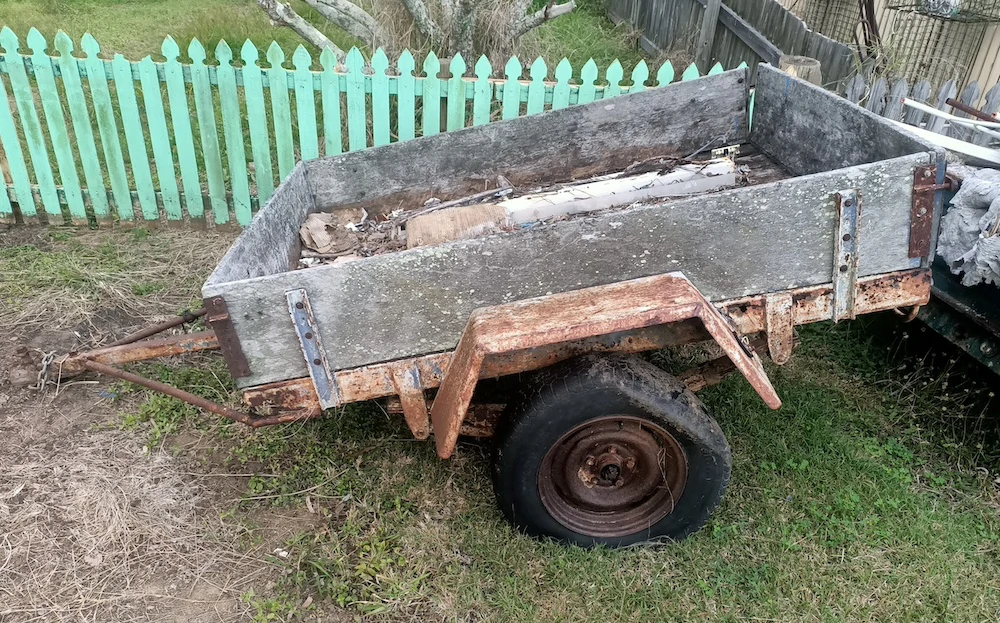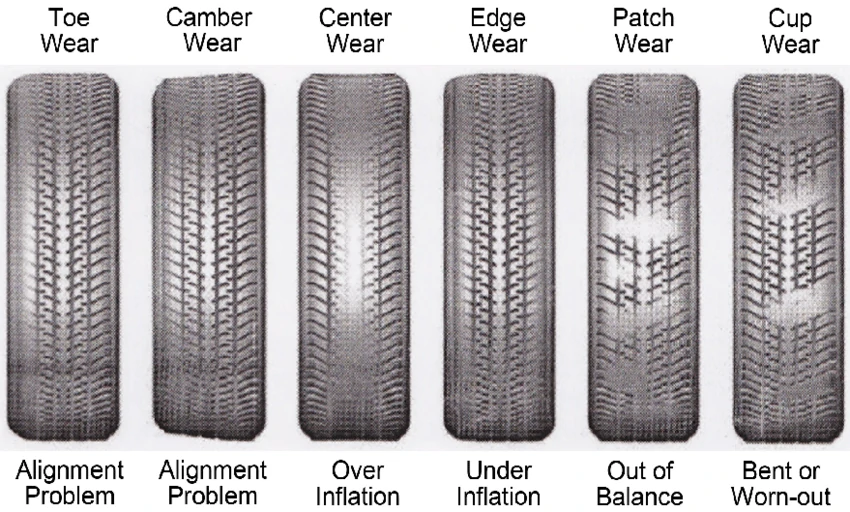
Menu
$ AUD
-
$ AUD
-
$ NZD
-
$ USD
-
€ EUR
-
$ CAD
-
د.إ AED
-
$ ARS
-
R$ BRL
-
£ GBP
-
Ft HUF
-
₹ INR
-
kr. ISK
-
KSh KES
-
RM MYR
-
K PGK
-
₲ PYG
-
₱ PHP
-
zł PLN
-
₽ RUB
-
R ZAR
-
฿ THB
-
₺ TRY


Regular trailer maintenance is essential for a comfortable towing experience and safe hauling, regardless of the type of trailer you own.
This article will cover the essential items you should look for before using your trailer.
Recommended Maintenance Frequency: Before each use.
Like your car or truck, you should regularly check the trailer tyre pressure to ensure it matches the level indicated on the sidewall and/or trailer placard. This is important even if you haven’t used your trailer because tyres lose air over time. Tyre pressure should be checked when the tyres are cold, not after towing.
Inspect the sidewalls of your tyres for any cracks, bulges, cuts, or foreign objects which might compromise their performance. The tread on your tyres can be a great indicator of other issues as shown below.

When replacing or changing a tyre always use a suitable jack; if getting under the trailer, use jack stands as a safety precaution. Check the thread on the wheel studs for wear before installing the new tyre. Wheel nuts should be put on in a criss-cross pattern. Never use anything other than a wheel wrench and your hands to tighten the bolts (e.g., your foot!). Excessive force can weaken the studs or shear them off completely.
HOT TIP: Don’t forget to check your spare tyre!
Recommended Maintenance Frequency: Every 6 months (more frequently if towing heaving loads frequently).
Your trailer bearings will eventually fail – this is why it’s good to be aware of the signs of bearing failure. After a short drive, pull over and check the temperature of the hub cap and general hub area. It should be cool or even warm, but not hot.
Another check is to grasp the top of the wheel and rock it from side to side. You shouldn’t experience any movement (rocking) in this direction – if there is, it can be an indication that your bearings are close to failure, or that the axle nut is too loose and needs to be adjusted.
It is hard to know exactly when your bearings will fail or for how long they will last. Therefore, regular maintenance is necessary, with bearing checks recommended at least every 6 months. Ensuring your trailer bearings are properly greased and free from contaminants means that you will maximise the life of your bearings.
The hubs house the important wheel bearings and are associated with the brakes. Check that the hub face is clean and free from rust, dirt, and grime. It’s essential that the inner part of the hub is free of contaminants and well-greased to protect the wheel bearings.
When replacing the hub, ensure the hub face is clean and free from rust, dirt and grime. Check that the castle nut is tightened correctly. Tighten the nut until it is firm, then back it off half a turn. You don’t want the nut to be too tight or too loose. There shouldn’t be any rocking in your hub, but it can easily rotate.
For detailed information about changing bearings, read our guide to checking and changing trailer bearings.
Recommended Maintenance Frequency: Before each use (general operation), every 6 months for brake pads (i.e., when checking hubs and bearings).
After removing the hub, clean the brake assembly with a suitable brake cleaner and allow it to dry. Check the brake shoes for wear. Some hairline heat cracks are normal, but if the lining is worn over 2mm, corroded, damaged or contaminated with grease, they will need replacing.
If your trailer braking system utilises brake pads, they may need changing. Change the brake pads before they reach the metal backing of the pad!
If you have electric brakes, inspect the springs for deformity and the electromagnet for uneven wear. Check that your brake controller is working as per the manufacturer’s specifications.
If you have hydraulic brakes, inspect the wheel cylinder for leaks and flush with clean brake fluid if required. You should also check the brake lines for cracks or breaks and repair them as necessary. You may also need to bleed the brakes.
Manual checks of your brakes can indicate whether they need adjustment. They will need adjusting if the hub can spin by hand while the brakes are engaged. This also applies to handbrakes.
For trailers with a breakaway system, ensure the breakaway battery has an appropriate power level and that the switch can be successfully activated – you will need to hook your trailer to your vehicle to test this.
For the boaters, you can read more about how to maintain boat trailer brakes in our specific guide.
Recommended Maintenance Frequency: Every 6 months (more frequently if towing heaving loads frequently).
Trailer axles should be checked to make sure they are aligned (equal distance from the coupler on each side) and that all bolts are tight. Pay particular attention to the spindle (while the hub is removed). A damaged spindle may indicate failing trailer bearings.
A critical point to check is the spring hangers and where they are attached to the chassis. This is a common area where the chassis fails. Inspect spring hangers for cracks and check that all spring mounting bolts are tightened to manufacturers specifications. Grease shackle pins if applicable.

Recommended Maintenance Frequency: Once yearly.
Over time, chipped or flaking paint, rust, and cracks, especially along any welds, can compromise the frame. Keeping on top of these things means you can perform repairs before minor issues become significant.
Critical points to check are where the drawbar connects to the chassis and as mentioned in the previous section, where the suspension is attached to the chassis.
You will typically first notice rust occurring where two metal faces butt against each other, like where the flooring sheets sit on the frame. These areas are often overlooked when painting and are thus, unprotected from the elements.
Recommended Maintenance Frequency: Before each use.
Inspect your coupler for dents or bends that may prevent your tow ball from fitting correctly in the socket. Also check that the coupler latch isn’t damaged and that the couple locks to the vehicle tow ball. Grease the coupler every 6 months or when conducting a major service.
Recommended Maintenance Frequency: Before each use.
Road debris (e.g., rocks) and environmental conditions (e.g., wet weather) can interfere with your trailer’s electrical system. You should perform regular checks of the taillights, brake lights and blinkers. Perform further checks of any wires to make sure nothing has been exposed, frayed or cut by road debris. If you detect faulty lights, ensure all connector plugs and sockets are clean and weather-tight.
Recommended Maintenance Frequency: Before each use.
Check any points on your trailer used to secure loads to ensure they are safe for your next hauling trip. Repair or replace if cracked.
Regular and thorough trailer maintenance is crucial for ensuring trailer longevity and performance.
By following our guide to trailer maintenance, you can help to keep yourself and others safe on the road and avoid fines and hefty repair bills.
If you need help completing any of the maintenance checks, remember to consult a professional mechanic rather than just putting the job off. This will give you peace of mind so you can enjoy your trailering.
Like this post? Follow, like or share on your favourite social platform. You can leave us a comment below!